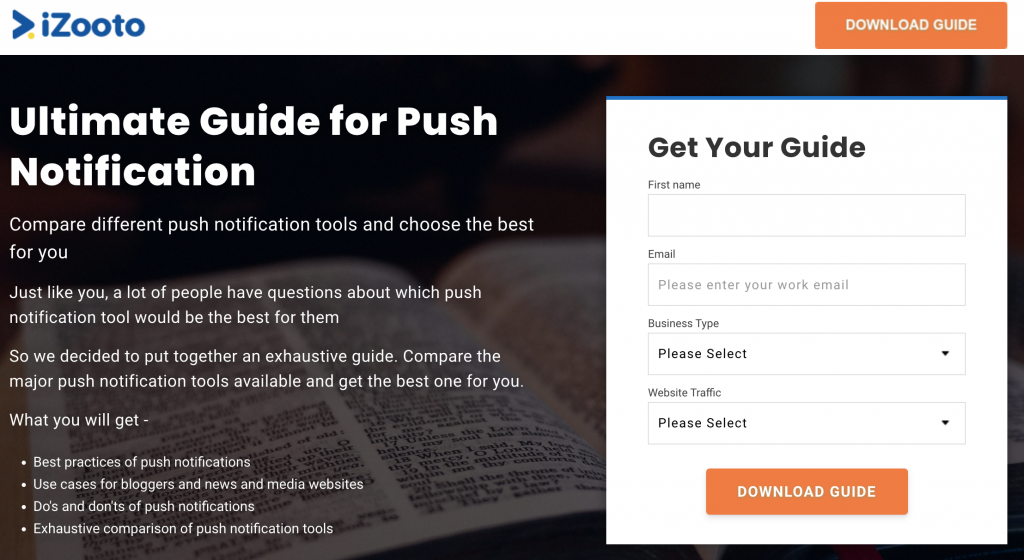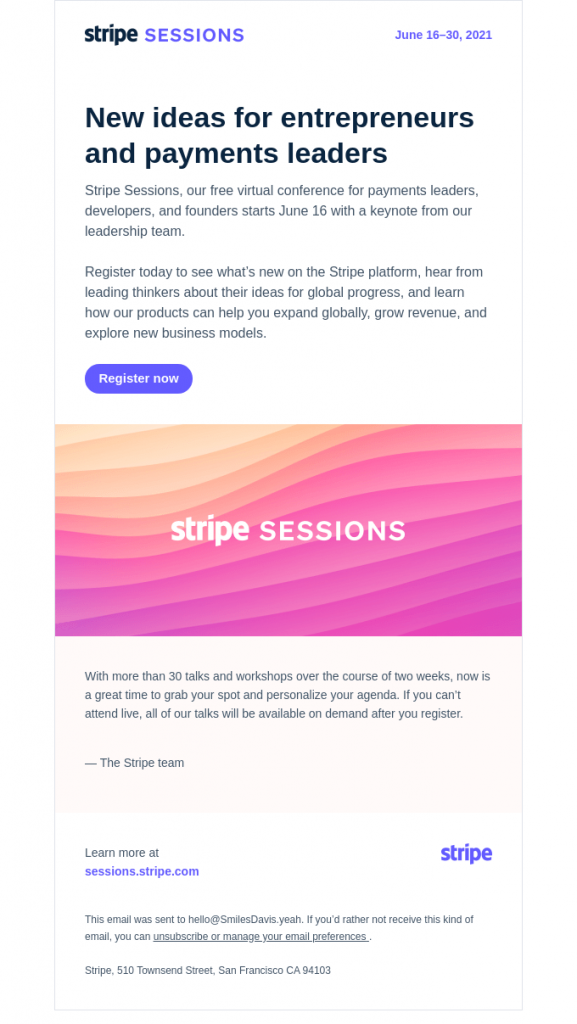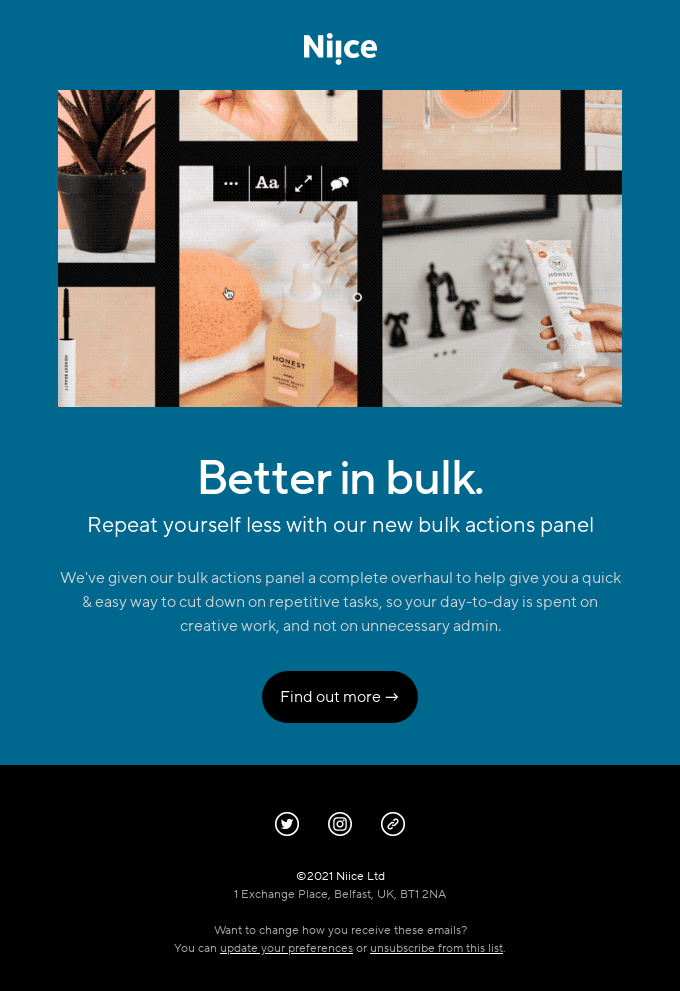5 Steps to Build an Email Marketing Funnel (Upated for 2023)
Whether you love it or hate it, email marketing is an inseparable part of every digital marketing expert’s life.
Whether you need to create your email marketing strategy or improve an existing one, our guide will be helpful to you as we will discuss one of the essentials of email marketing – building funnels.
What is an Email Marketing Funnel?
An email marketing funnel is a set of stages that shows how your prospects go from learning about you to becoming a loyal customer. To help the lead move from stage to stage, you also need email content and tactics to help your customers navigate through the funnel and reach the loyalty state.
The funnel consists of four main levels:
- Awareness when your strategy is to invest in your brand and have as many relevant people find out about you as possible.
- Consideration when you allocate resources and time to build trust with your target audience.
- Conversion when you need to help your leads make up their mind and buy your products and services.
- Loyalty when you make sure that your new customers like you so much that they want to stay with you longer and become your advocates.
Here is what the email funnel looks like visually.

But why choose email instead of other channels? Well, despite what many marketers think, email is alive and doing well, and here are several statistics supporting it:
- Every day, people send 306 billion emails (as of 2020), and this number is expected to rise to 376 billion in 2025.
- A properly-executed email marketing strategy can have an ROI as high as 3,600%.
- An average open rate for emails is almost 20%, while the average CTR is above 11%.
Thus, building an email marketing funnel seems absolutely vital to achieving more successful conversions. If the facts above are not enough for you to start with email marketing funnels, then we have several more important benefits for you coming up next.
4 Benefits of an Email Marketing Funnel
With the email sales funnel, you segment your communications with your leads into the four sections that we have described above. This segmentation lets you achieve a significant increase in effectiveness of your email marketing efforts.
To better understand the positive impact you can get from implementing email marketing funnels, we have identified four of its main benefits for you.
Benefit #1: Personalization
Creating quality content with personalized experiences and communications with your leads and customers is a key trend in the digital marketing industry. And there are a couple of good reasons why marketers love this tactic, in particular:
- Personalization gets you a significant decrease in customer acquisition costs, which can be up to 50%.
- Around 85% of users expect personalization of some sort in the marketing messages they get when shopping online.
- Almost 90% of businesses have benefited from personalization in the form of increased conversion rates, engagement, etc.
The specialized email marketing automation tools that you will eventually use to implement your funnel have capabilities for creating personalized messages and workflows. Here are some of these features.
Gather the data necessary for personalization, such as their full name, their interests, and even purchase history.
Regarding interests, you can collect them using the features such as the opt-in forms and landing pages that these tools provide. The purchase history, on the other hand, is available for you with the eCommerce integrations of modern marketing tools.
Create messages with variable content. We are speaking about the “Hi there {first_name}, how are you?” type of features that you can find in funnel builders of email marketing tools. These features allow you to personalize subject lines and body, creating quality content in your emails.
With these capabilities, you can craft templates that will not only use your customers’ names but also offer product suggestions based on their interests or even behavior.
Benefit #2: Clear customer journey
As part of building your funnel, you’ll also have to map out all of the steps your customers take to learn about you, trust you, and buy your products.
This list of steps and touchpoints is also known as the customer journey (or buyer’s journey).
As you are defining the stages your customers should go through before making a purchase, it also simplifies the process of creating a customer journey and understanding how people feel and act at each of your funnel stages.
Let’s look at these stages one by one and see how your customer journey perfectly fits into them.
Awareness stage: at this point, people are unaware of your existence and the products you offer. Here, you need them to know about your existence and the fact that you can cover their pain points.
The steps customers take at this stage are to familiarize themselves with your company, brand, and products.
Consideration stage: this is when people are trying to evaluate you and understand if your products or solutions are what they are looking for and if they can trust you.
The steps customers take here are to research solutions, compare them, and pick the one they consider the best fit (ideally yours).
Conversion stage: here, people have already selected your product, but they might still have doubts or questions blocking them from becoming paying customers.
Customers’ steps, in this case, are to find answers to their concerns and questions and, if all is right, buy your product.
Loyalty stage: this is when your customers are repeatedly using your products, but they might have questions and need support from you.
The customer steps here are to reach out to you for help and support.
Benefit #3: Measurable results
When you break down your email marketing process into steps, you can experience another great benefit – improved measurability.
In case you are wondering what you should measure and monitor for your funnel, we have identified the most important metrics for you below.
- Open Rate: It is a percentage of emails that your recipients have opened among all of your emails sent within a campaign.
- Click-Through Rate (CTR): This metric shows the percentage of people that have clicked on a CTA button or link in your emails. It is calculated by dividing unique clicks by the number of emails delivered in your marketing campaign.
- Conversion Rate: Here, we have a percentage of people who have reached your goal (e.g., made a purchase, signed up, etc.). The calculation is similar to the CTR, but in this case, you divide the number of unique conversions by the emails delivered.
- Bounce Rate: This one is a percentage of emails that have not been delivered (bounced) among all of your sent emails. We have a comprehensive guide on bounce rate that you can check out for more info about this metric.
- Email Sharing Rate: Calculated as the percentage of clicks on social media share buttons in the emails you have sent.
- Unsubscribe Rate: This metric is the number and percentage of unsubscribes from your sent emails.
You can find more details and explanations about these metrics in our dedicated guide on email marketing KPIs.
Benefit #4: Higher ROI
If you have set up an email marketing funnel, you can expect an increase in your Return on Investment.
But I do not think you would accept this assertion without any proper explanation of why your ROI will increase with a properly built funnel. Thus, we have two points for you below that support our idea.
Email marketing with funnels is cost-effective. The email marketing tools available on the market are highly-automated. You will need to set up your funnel and customizable emails only once, and the tool will take care of the rest automatically. You might need to monitor and optimize it, but it is still a substantially lower amount of effort than handling email campaigns manually.
Thus, with email automation funnels, you save your marketing team’s time and your company’s salary budget.
Well-made funnels increase your conversion rate. If you know your customer’s needs at each stage of the funnel, you can make customized emails for these stages and target customers’ needs with the right messages.
To conclude, building a funnel is a highly beneficial idea for your email marketing efforts, as you can expect more clarity and better returns from it.
Now that we know the value of email marketing funnels, let’s understand how you can build your own.
How to Build an Email Marketing Funnel in 5 Simple Steps
Sometimes the term “marketing funnel” and the intricate explanations accompanying it give an impression that it is something complex and only the most advanced marketing experts are capable of building it.
But the good news is that creating a funnel is much simpler than you thought. We have curated a list of five simple steps for you to take to build a funnel of your own.
Step #1: Map the customer journey
No matter what kind of marketing messaging you make, your first step should always be to understand your customer and what they want.
A customer journey map is a tool that lets you identify and visually represent all the points where your target customer interacts with your brand or product.
With a journey map, you have the chance to understand and define not only the timeframes and places of this interaction but also your customers’ needs at each point.
The example below gives a better outlook of what a journey map looks like.

Here we can also see that your customers might experience different emotions along the journey, too, from sadness to confusion and relief.
Thus, when the needs and feelings are different for each stage, your emails should be different too. The reason is that the effectiveness of your communications with your email subscribers is directly dependent on how well you have mapped out their journey. There is also your knowledge about their emotions and requirements on each step that affects it too.
Step #2: Select an email marketing tool
Getting the right weapon is also monumental for the success of your email marketing. The SaaS space is full of email marketing tools optimized for solving different types of problems for marketers.
Here are some of these platforms for your consideration, along with the problems they solve the best:
All-in-one marketing suites. These tools cover a wide variety of marketing channels and have CRM and CMS capabilities. They include advertising capabilities and content marketing features, letting you create targeted content as well as email marketing. Some prominent examples are:
- HubSpot (along with its alternatives)
- EngageBay
- Salesforce
Specialized email marketing tools. They have kept their focus on a single channel – email and tried to excel at it. Some well-known email marketing tools include:
- EmailOctupus
- MailerLite
- MoonMail
Omnichannel marketing tools. This category supports multiple channels, including email, but lacks the CRM and CSM capabilities of all-in-one suites. Here are three popular omnichannel tools:
- Sendinblue with email and SMS marketing.
- Omnisend with web push notifications, SMS, and email.
- Mailchimp with email, social media, and ads.
P.S. We have many comparison guides on email marketing tools, such as ActiveCampaign vs. Mailchimp and SendGrid vs. Mailchimp, that you can check out too.
Step #3: Generate leads
No email marketing is possible unless you have a list of emails to send.
With your journey clear and your email marketing tool selected, your next step is to build your email list.
What you need to focus on during this stage is the quality of your list. Instead of just getting random irrelevant people to hand you over their emails, make sure that your new subscribers are relevant, interested, and fall under the marketing-qualified lead category.
There are two common approaches for building a sizable list of relevant leads:
- Opt-in forms: these are forms and popups that you embed into your website or blog to ask for a visitor’s email along with other optional information, such as their name or company.
- Landing pages: unlike the embedded forms, these are dedicated pages with a lead magnet, such as an ebook, course, or a free trial.
Here’s what a typical landing page with a lead magnet looks like.

There are also alternative approaches to building your lead list, like safelist marketing, but they are very unconventional, and you should consider them only when you know how to do them right.
Step #4: Nurture leads
After finding an effective approach to lead generation and building up your audience, you should start thinking about a series of emails to interact with your subscribers and make sure that they are well-engaged.
At this stage, you can take advantage of the data you have gathered about your leads, such as their interests and purchase behavior (both are available when you integrate your marketing tools with your eCommerce platform), to segment them based on their needs and send them personalized offers.
Some of the popular lead nurturing emails include (we have more marketing examples too):
- A compelling first email (also known as a welcome email).
- Offers that match the lead’s interests and preferences and highlight the benefits of your product.
- Social proof, such as case studies and testimonials relevant to the prospect’s case.
- Freebies and educational content, such as guides, books, and webinars.
Here’s a sample of a webinar/conference invitation from payment processor service Stripe.

Instead of just a regular webinar, Stripe has organized an entire online conference with well-known speakers and topics relevant to software business owners. With this conference, they make sure that their target audience is engaged with their brand and trusts them.
Finally, when your new leads are interested, engaged, and ready to buy your products, you can move on to turning them into paid customers with conversion emails, such as time-sensitive offers, onboarding guides, etc.
Step #5: Retain leads
No, your job is not done yet. After your leads become existing customers, you need to work hard on retaining them. The reason this step is essential is that retention is 6-7 times cheaper than acquisition.
The main goal of your retention emails would be to keep your users interested in you and happy with their use of your products and services. If you do this right, you will put your customer in a state that most digital marketing experts dream about – loyal followers.
Loyalty does not only mean that customers will use your products and services for a long time (thus, increasing their lifetime value) but also that they will praise and recommend you to their friends and colleagues.
Here are some retention email ideas for you:
- Sending follow-ups, upsell and cross-sell offers.
- Providing them with news and updates about your platform.
- Giving them usage reports, progress reports, newsletters, or anything similar.
As an example of retention email, we bring you branding SaaS Niice and its feature updates.

Finally, you can create a loyalty or referral program and offer your customers special discounts for staying with you or referring you to their friends.
Now Over to You
Email marketing is still a highly relevant and effective strategy for digital marketers. With a well-built and executed marketing funnel, it will drive more sales and ensure a high return on your investments.
This guide was one among many about email marketing that we have on our blog. Go check the others out too.

Sona Kalantaryan is a senior digital marketer with a creative past. Big fan of high cinema and well-optimized landing pages. She authors guides by sharing the best practices and does it the right way!
